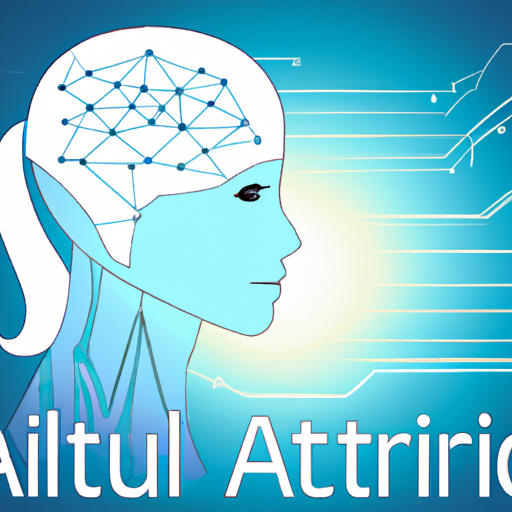-
Table of Contents
- Introduction
- The Role of Data Pre-Processing in Machine Learning
- Understanding the Basics of Machine Learning Model Evaluation
- Exploring the Different Types of Machine Learning Algorithms
- The Benefits of Automating Machine Learning Processes
- How Machine Learning Can Help Improve Your Business
- Conclusion
“Unlock the power of machine learning with The Complete Guide!”
Introduction
The Complete Guide to Machine Learning is an essential resource for anyone interested in learning about the rapidly growing field of machine learning. This guide provides an overview of the fundamentals of machine learning, including the different types of algorithms, the various applications, and the tools and techniques used to build and deploy machine learning models. It also covers the latest trends and developments in the field, such as deep learning, reinforcement learning, and natural language processing. With this guide, you will gain a comprehensive understanding of machine learning and be able to apply it to your own projects.
The Role of Data Pre-Processing in Machine Learning
Data pre-processing is an essential step in the machine learning process. It is the process of preparing data for analysis and modeling. It involves cleaning, transforming, and organizing data so that it can be used effectively in machine learning algorithms.
Data pre-processing is important because it helps to ensure that the data is of high quality and is suitable for the machine learning task at hand. It also helps to reduce the complexity of the data and make it easier to interpret.
Data pre-processing involves a variety of techniques, such as data cleaning, data transformation, feature selection, and feature engineering. Data cleaning involves removing or correcting any errors or inconsistencies in the data. Data transformation involves transforming the data into a format that is more suitable for machine learning algorithms. Feature selection involves selecting the most relevant features from the data. Feature engineering involves creating new features from existing features.
Data pre-processing is also important for improving the accuracy of machine learning algorithms. By pre-processing the data, it is possible to reduce the amount of noise in the data and make it easier for the algorithms to learn. Pre-processing can also help to reduce the complexity of the data and make it easier to interpret.
In summary, data pre-processing is an essential step in the machine learning process. It helps to ensure that the data is of high quality and is suitable for the machine learning task at hand. It also helps to reduce the complexity of the data and make it easier to interpret. Pre-processing can also help to improve the accuracy of machine learning algorithms.
Understanding the Basics of Machine Learning Model Evaluation
Machine learning model evaluation is an important step in the development of any machine learning system. It is used to assess the performance of a model and determine whether it is suitable for a given task. Model evaluation involves measuring the accuracy, precision, recall, and other metrics of a model’s performance.
Accuracy is a measure of how well a model can correctly classify data points. It is calculated by dividing the number of correctly classified data points by the total number of data points. Precision is a measure of how well a model can identify true positives. It is calculated by dividing the number of true positives by the total number of predicted positives. Recall is a measure of how well a model can identify true negatives. It is calculated by dividing the number of true negatives by the total number of predicted negatives.
In addition to accuracy, precision, and recall, other metrics can be used to evaluate a machine learning model. These include the F1 score, which is a measure of the model’s ability to correctly classify both positive and negative data points; the ROC curve, which is a graphical representation of the model’s performance; and the confusion matrix, which is a table that shows the model’s performance in terms of true positives, false positives, true negatives, and false negatives.
When evaluating a machine learning model, it is important to consider the context in which the model will be used. For example, if the model is being used for medical diagnosis, then accuracy and precision are more important than recall. On the other hand, if the model is being used for fraud detection, then recall is more important than accuracy and precision.
Finally, it is important to consider the cost of the model. If the model is too expensive, then it may not be worth the investment. On the other hand, if the model is too cheap, then it may not be reliable enough to be used in production.
By understanding the basics of machine learning model evaluation, developers can make informed decisions about which models to use and how to optimize them for their specific tasks.
Exploring the Different Types of Machine Learning Algorithms
Machine learning is a rapidly growing field of artificial intelligence that has the potential to revolutionize the way we interact with technology. It is a form of artificial intelligence that enables computers to learn from data and make decisions without being explicitly programmed. Machine learning algorithms are used to identify patterns in data and make predictions or decisions based on those patterns.
There are several different types of machine learning algorithms, each with its own strengths and weaknesses. The most common types of machine learning algorithms are supervised learning, unsupervised learning, and reinforcement learning.
Supervised learning algorithms are used to classify data into different categories. These algorithms use labeled data to learn how to classify new data. Examples of supervised learning algorithms include decision trees, support vector machines, and neural networks.
Unsupervised learning algorithms are used to identify patterns in data without the use of labels. These algorithms are used to discover hidden structures in data and can be used to cluster data into groups. Examples of unsupervised learning algorithms include k-means clustering, hierarchical clustering, and self-organizing maps.
Reinforcement learning algorithms are used to learn how to take actions in an environment to maximize a reward. These algorithms are used to teach machines how to interact with their environment and learn from their mistakes. Examples of reinforcement learning algorithms include Q-learning and deep Q-learning.
No matter which type of machine learning algorithm is used, it is important to understand the strengths and weaknesses of each algorithm in order to choose the best one for a given task. Each algorithm has its own advantages and disadvantages, and it is important to understand how each algorithm works in order to make the best decision.
The Benefits of Automating Machine Learning Processes
Automating machine learning processes can provide a number of benefits to organizations. Automation can help to reduce the time and cost associated with manual processes, while also increasing the accuracy and reliability of the results. Automation can also help to reduce the complexity of the process, making it easier to understand and manage.
One of the primary benefits of automating machine learning processes is the ability to reduce the time and cost associated with manual processes. Automation can help to streamline the process, allowing for faster and more accurate results. This can help to reduce the amount of time and resources needed to complete the process, resulting in cost savings. Additionally, automation can help to reduce the complexity of the process, making it easier to understand and manage.
Another benefit of automating machine learning processes is the ability to increase the accuracy and reliability of the results. Automation can help to reduce the risk of errors, as well as the potential for bias in the results. Automation can also help to ensure that the results are consistent and reliable, as the process is automated and not subject to human error.
Finally, automating machine learning processes can help to improve the overall efficiency of the process. Automation can help to reduce the amount of time and resources needed to complete the process, resulting in improved efficiency. Additionally, automation can help to reduce the complexity of the process, making it easier to understand and manage.
Overall, automating machine learning processes can provide a number of benefits to organizations. Automation can help to reduce the time and cost associated with manual processes, while also increasing the accuracy and reliability of the results. Automation can also help to reduce the complexity of the process, making it easier to understand and manage. By taking advantage of automation, organizations can improve the efficiency of their machine learning processes and achieve better results.
How Machine Learning Can Help Improve Your Business
Machine learning is a powerful tool that can help businesses improve their operations and increase their profits. By leveraging the power of machine learning, businesses can gain insights into customer behavior, automate processes, and optimize operations.
Machine learning can be used to analyze customer data and identify patterns in customer behavior. This can help businesses better understand their customers and develop strategies to better meet their needs. For example, machine learning can be used to identify customer segments and target them with personalized offers.
Machine learning can also be used to automate processes. By leveraging machine learning algorithms, businesses can automate mundane tasks such as data entry and customer service. This can help businesses save time and money, as well as improve customer satisfaction.
Finally, machine learning can be used to optimize operations. By leveraging machine learning algorithms, businesses can identify inefficiencies in their operations and develop strategies to improve them. For example, machine learning can be used to identify bottlenecks in production processes and develop strategies to reduce them.
In summary, machine learning can be a powerful tool for businesses to improve their operations and increase their profits. By leveraging the power of machine learning, businesses can gain insights into customer behavior, automate processes, and optimize operations.
Conclusion
The Complete Guide to Machine Learning is an invaluable resource for anyone interested in learning more about the field of machine learning. It provides a comprehensive overview of the different types of machine learning, the algorithms used, and the applications of machine learning. It also provides a wealth of practical advice on how to get started with machine learning and how to apply it to real-world problems. With its clear explanations and examples, this guide is an essential resource for anyone looking to gain a better understanding of machine learning.



